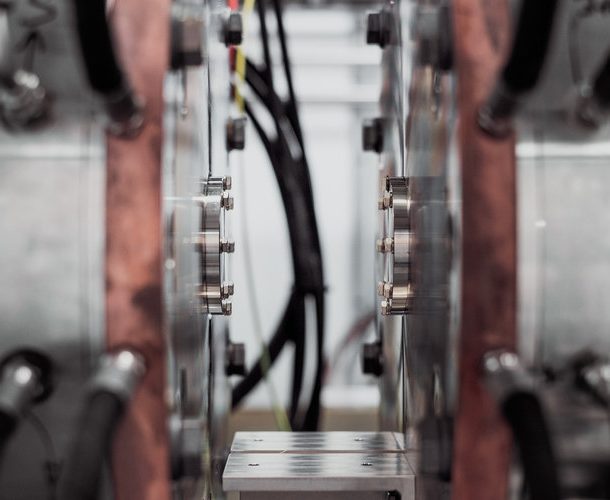
Fast Track Your Savings With Fixed Deposits
First You Work For Your Money, Then Your Money Works For You
When it comes to personal finance, it seems that everyone is an “expert.” Advisers and insiders promote investment ideas carrying high fees and complicated terms. The more confusing they make the idea, the more justified they feel in commanding a hefty fee.
The truth doesn’t change because we stop believing it. The basis of any successful personal-finance savings plan is this: simplicity. Investors can simplify their approach by crafting a plan that offers a dependable return with high liquidity for short-term cash needs.
DON’T FORGET YOUR TOOTHBRUSH
Think simple solutions aren’t enough? Consider how NASA astronauts repaired a doomed space station in 2012. Engineers orbiting the earth were on a mission to restore power to the International Space Station until a bolt became stuck. While floating 249 miles above Earth, the astronauts faced failure. Then everything changed. They determined that cleaning the bolt would likely loosen it enough to complete the repairs.
What did they use? An ordinary electric toothbrush. An everyday item found in most bathrooms saved a billion-dollar experiment. Simple solutions exist.
MONEY NEVER SLEEPS
The astronauts had a plan, and you need one too. The problem, however, is that we live in an uncertain world. This uncertainty makes planning difficult. In fact, the only certainty is inflation (and of course taxes). The average inflation rate in Trinidad and Tobago was 7.38 percent between 1957 and 2016. This increase in the cost of everyday necessities means that simply saving money is not enough. The value of your account will slowly erode without a return on your cash.
As the old saying goes, “First you work for your money, then your money works for you.” You need to put your money to work in a reliable way, so you know what your investment will generate.
You can take a sick day now and again—but your money cannot.
WEATHER THE STORM
The dependability of a consistent savings tool matters because investors today face many headwinds threatening their savings. Inflation isn’t the only factor working against you. The stock market can also be perilous for short-term investors.
The Trinidad & Tobago Stock Exchange lost 3.7 percent over the 12 months following January 6, 2015. Short-term fluctuations such as this put pressure on investors seeking liquidity. While the stock market offers opportunities for long-term investors, it is dangerous for those who prioritise dependability, liquidity, and short-term needs.
These short-term horizons (one to five years) are too erratic for those seeking preservation of savings with a reasonable return. Research has shown that stock market investing is suited only to those playing the long game. In fact, the S&P 500’s annualised returns fluctuate from +54 percent to -43 percent on average over a one-year period.
Over the average five-year period the picture only improves slightly with a swing between +28 percent and -12 percent. These measurements come from performance data spanning 20 years.
So, what’s the solution? Let’s look at fixed deposits.
Author Alexandre Dumas reminds us, “Life is a storm.” He continues, “You will bask in the sunlight one moment, be shattered on the rocks the next.” The anchor of fixed deposits will help you weather the inevitable storms that beset financial markets and personal savings.
Fixed deposits offer the predictability of a regular rate of return unfazed by political headlines, capricious traders or missed earnings estimates. The tides will turn and the waves will crash, but fixed deposits will remain.
The idea is simple: you invest a sum of money for a period of one, three or five years. For whichever period of time you choose, you will leave your money untouched. That is, your savings will be safe from the temptation to spend. In the meantime you will earn a fixed rate on your investment, allowing you to enjoy the benefits of compounding.
THE EIGHTH WONDER OF THE WORLD
Einstein said it best: “Compound interest is the eighth wonder of the world. He who understands it, earns it … he who doesn’t … pays it.” Simply put, compounding is the magic of earning money from previous earnings. Therefore, the longer you invest in a fixed-deposit account, the more you can benefit from the Eighth Wonder of the World.
It’s easy to think that money is the most valuable asset. However, time is the most precious thing we own. With more time comes a greater opportunity to earn and grow wealth.
Better still, investors can enjoy compounding across several fixed deposits simultaneously. By using multiple deposit accounts with varying maturity dates, you can maximize your returns. This approach, “laddering”, starts with a budget.
Determine what your needs will be in one, three and five years. By segmenting your savings across three durations, you can capitalize on the more aggressive rates offered by longer-term fixed deposits (two and five years). This strategy allows investors to enjoy liquidity while picking up a return that is often competitive with some conventional bonds.
Additionally, laddering exercises one of the most critical aspects of personal finance: discipline. When you use a fixed-deposit investment, you’re committing to a savings plan. Your money is locked down.
Some may choose to use an ordinary savings account. The problem? The interest rate will not get you where you want to go. Today, interest rates on savings accounts only reach as high as 0.15 percent. Take note: this growth falls short of the annual inflation rate we discussed just now.
Choose the option that ensures a decent return while keeping your savings tucked away and you will bask in the sunlight.
CBTT’s Market Conduct Guideline | Privacy Policy



